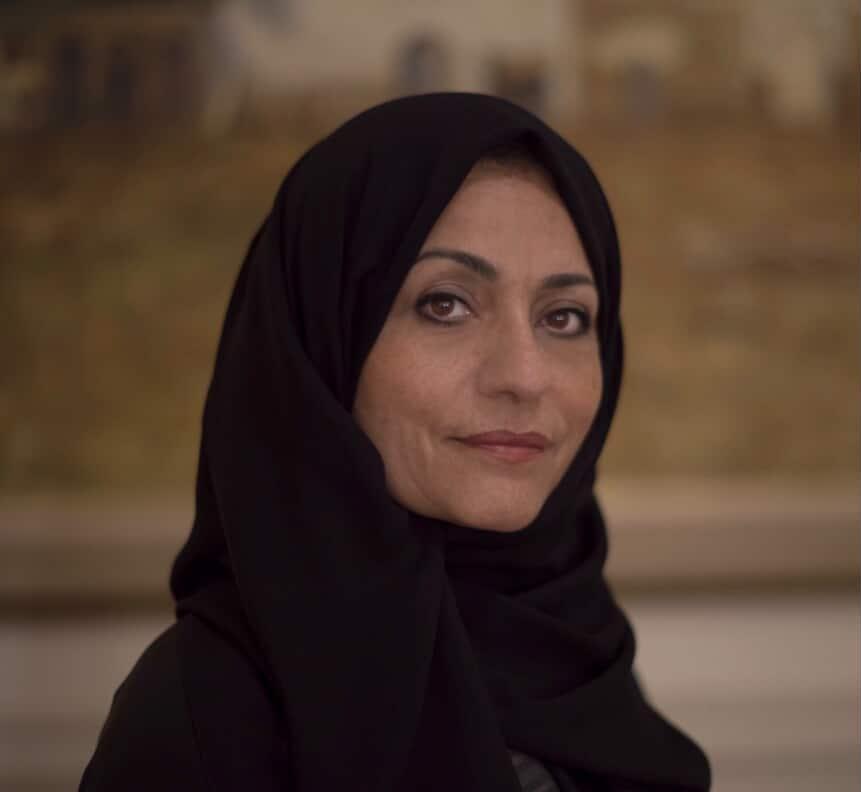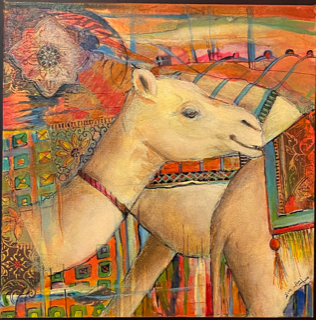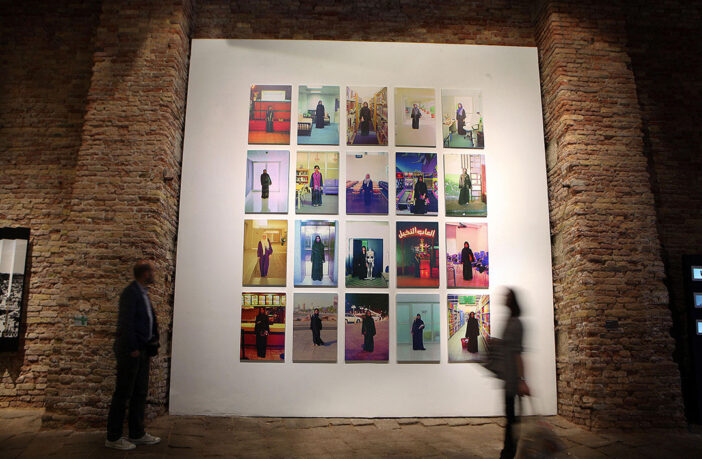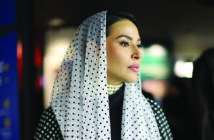A Conversation with Saudi artists Samiah Mohammed Khashoggi and Nouf Alhimiary
Saudi Arabia is emerging as a dynamic artistic hub, propelled by a wave of cultural initiatives and strategic investments transforming its creative landscape. With the establishment of the Saudi Art Council and the development of JAX District in Diriyah—a vibrant space for artists, galleries, and cultural events—the Kingdom is fast becoming a vital destination for artists and art enthusiasts alike.
At the heart of this cultural renaissance are themes shaping the contemporary art scene: pop culture, self-expression, faith, and heritage.
Two major biennales underscore the Kingdom’s growing global influence: the Islamic Arts Biennale in Jeddah, which bridges tradition and innovation in Islamic visual culture, and the Diriyah Contemporary Art Biennale in Riyadh, which amplifies global and local artistic voices. Both events feature exhibitions, workshops, and talks, offering immersive experiences for collectors, curators, and art lovers.

Samiah Khashoggi instagram.com/samiah_khashoggi
Among the rising and established voices shaping this evolving landscape are Samiah Mohammed Khashoggi, a veteran artist and educator dedicated to nurturing creativity, and Nouf Alhimiary, a bold multidisciplinary artist whose work explores the complexities of Saudi womanhood.
In this conversation, the two reflect on their creative journeys, cultural identity, and the power of art to shape societal narratives.

Nouf Alhimiary www.noufling.com instagram.com/noufling
Can you tell us about your journey into the world of art?
Samiah Khashoggi: My journey began when my father gave me my first drawing kit. That small gesture shaped my path. Studying in the UK during high school and later majoring in interior design helped hone my artistic skills. I had my first group exhibition in 1990, and from there, things unfolded. I earned my MFA in the UK, founded Saudiaat in 2005 — a collective for Saudi women artists — and held solo exhibitions in 2000 and 2014. Despite the demands of my role as a university lecturer, sketching daily keeps my creative spirit alive.
Nouf Alhimiary: Growing up, I always knew I wanted to reflect creatively on the world around me. My parents, Sabah and Sameer, didn’t always understand what I was doing, but they gave me the space and support I needed. I was a sensitive child and drawn to visual storytelling — images held power for me, and I wanted to be part of creating, interpreting, and speculating through them.
What inspired you to become an artist?
Samiah: It was never a conscious decision — art is fuel for my soul. It’s something I need to feel complete. It has always been intuitive for me.
Nouf: Honestly, I didn’t think of art as a career while growing up. That kind of future didn’t feel visible or possible at the time. It was during my time at Effat University, surrounded by a supportive community that I began to believe in that possibility and pursue it with intention — to seek opportunities and create them for myself.

Resting Place, 2023 by Nouf Alhimiary
How has your cultural background influenced your creative expression?
Samiah: Early in my career, I was focused on technique and realism. But by 2005, I realized that my work didn’t fully represent who I was — a Saudi woman with a unique cultural identity. That awareness led me toward a more stylized approach that gave me greater freedom to express myself.
Nouf: My work is, in many ways, a love letter to Jeddah. Being a Jeddawi girl shaped me, and I’m endlessly inspired by our culture, history, myths, and the everyday life I witnessed growing up. That context is always present in my work.
Do you have any rituals or habits when creating?
Samiah: Sketching is my ritual. I’m known as “the sketchbook artist” among my followers, and it’s how I stay connected to my practice daily despite a busy teaching schedule.
Nouf: My process is an organized mess. Sometimes, I start with research; other times, it’s purely poetic. But it always involves balancing conceptual thinking with intuitive exploration — both forms of meditation, in a way.
How do you explore your Saudi identity, womanhood, or heritage in your work?
Samiah: My themes stem from what I know and live: women, children, and nature. These elements keep me grounded and ensure that my work remains honest and deeply personal.
Nouf: I explore how we produce and preserve the past — through stories, myths, and collective memory. I’m drawn to the everyday realities of girlhood, seeing them as worthy of reverence and exploration.

Camel series 1/2/3, by Samiah Khashoggi
What role do you think art plays in social or cultural change?
Nouf: Art offers a space to reflect on our experiences — the world around us, the objects we interact with, and our relationships. It allows us to imagine different futures, empathize with experiences outside our own, and engage deeply with life.
Samiah: It sparks dialogue and invites interpretation, which makes it a powerful tool for cultural enrichment and social introspection.
Is there a piece or project that’s particularly meaningful to you?
Samiah: There’s one piece that stands out — it embodies my values, faith, family, and love for my country. It incorporates southern color palettes and traditional patterns, and I see it as a reflection of my roots.
Nouf: That’s tough — every work I create is like a child to me. They each hold a piece of my journey, so it’s hard to choose just one.
What advice would you give to emerging artists in the region?
Samiah: Be open to learning and experimenting. Don’t create art for fame or money — let it come from a place of authenticity. Trust your process, silence your inner critic, and enjoy the journey more than the destination.
Nouf: Look at your life with curiosity — there’s so much richness in our everyday experiences. Make art that reflects your world and collaborate with others. Shared growth and different perspectives are invaluable.
Though their journeys are distinct, Nouf and Samiah share a profound love for art—seeing it not only as a personal expression but as a bridge to broader cultural dialogues. Their stories remind us that creativity is never solely individual; it is inherently communal, shaped by identity, place, and time.




